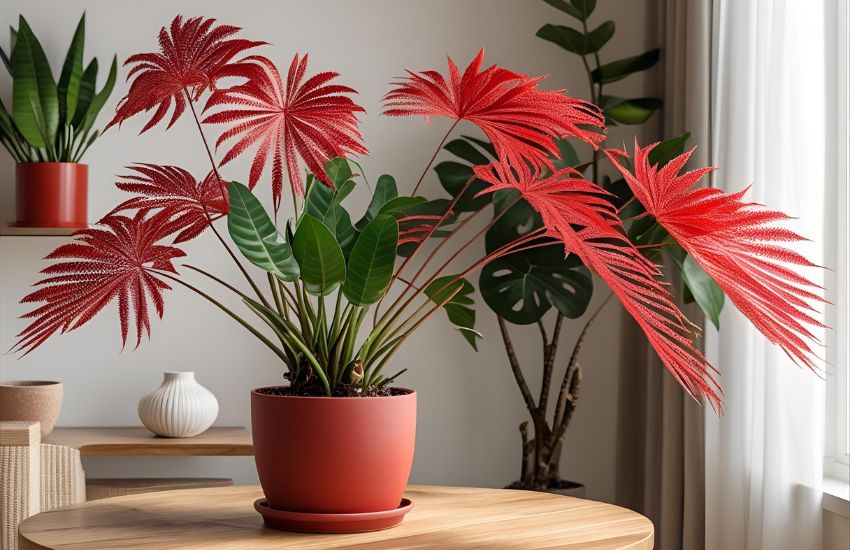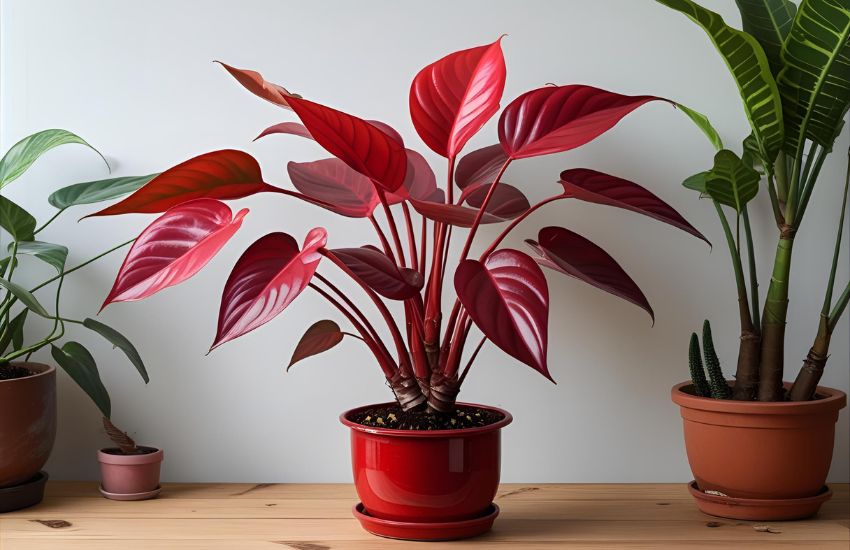Looking for a plant that adds vibrant color to your space without demanding much care? The Aglaonema, especially the Red Aglaonema variety, offers a striking mix of beauty and simplicity. With its bold pink and red hues on lush green leaves, this tropical plant not only elevates your decor but also fits effortlessly into your indoor routine. Known as a Chinese Evergreen, it’s perfect for busy individuals who still want to enjoy the calming presence of nature indoors.
This houseplant is well-loved for its tolerance to indirect light, flexible temperature range, and minimal water requirements. All it asks in return is well-aerated soil with good drainage, a pot with a drainage hole, and occasional checks on humidity levels to help it thrive. Whether you’re a beginner or a seasoned plant enthusiast, the Aglaonema proves to be a reliable addition to your collection.
In this care guide, you’ll discover everything you need to support your Red Aglaonema’s healthy growth—from choosing the right soil and avoiding overwatering, to understanding when to repot or treat root concerns. Explore practical tips on lighting, leaf care, and ensuring optimal conditions for long-lasting, colorful foliage.
How to Water, Fertilize, and Maintain Humidity for a Healthy Aglaonema Red Plant

Caring for an Aglaonema plant involves a balance of proper watering, light feeding, and maintaining the right humidity—key aspects of successful plant care. This section walks you through each step, helping you support your common aglaonema with confidence.
Watering Your Red Aglaonema: When Less Is More
Overwatering is one of the most frequent mistakes that can cause root rot in house plants, including the Chinese evergreen plant. For healthy moisture levels, always check the top inch of soil before reaching for the watering can. If it feels dry, your new plant is ready for a drink. Be sure your pot has good drainage to prevent stagnant water from accumulating at the bottom.
Aglaonemas can tolerate periods of drought better than they can sit in soggy soil. This makes them ideal for those seeking low-maintenance indoor plants that don’t demand daily attention.
Fertilizing: Feeding Your Aglaonema for Steady Growth
Use a balanced fertilizer (preferably liquid) every 4–6 weeks during the growing season (spring and summer). Avoid over-fertilizing, which can harm the roots and lead to salt buildup. A diluted formula at half strength is usually enough to support the steady growth of varieties like Aglaonema ‘Siam’ with their rich red and variegated leaves. Reduce or stop fertilizing altogether in fall and winter, when growth naturally slows.
Humidity: Creating the Right Environment
Although an Aglaonema plant can tolerate standard household humidity, it truly thrives in slightly elevated levels. If the air in your home is especially dry, especially during winter, consider placing your plant near a humidifier or on a tray filled with water and pebbles. This helps prevent leaf edges from browning and keeps your aglaonema care routine effective.
The light conditions in your space also influence your humidity strategy. In low light environments, reduce watering frequency and monitor your plant’s moisture needs more carefully.
Common Red Aglaonema Problems: Pest Control, Temperature Tips, and When to Repot

Aglaonema, with its striking variegation and silver-green foliage, is celebrated as one of the most low maintenance and easy to grow houseplants. However, even this tolerant plant can face challenges that require your attention. As a responsible plant parent, it’s important to understand common Aglaonema issues and how to address them effectively so your plant thrives year-round. From pest infestations to temperature stress and repotting signals, here’s what you need to know.
Pest Control: Spotting and Treating Infestations
Aglaonemas are generally resistant to many pests, but they are not immune. One of the most common pest issues involves the mealybug, a small, cottony insect that hides along leaf joints and the stem. A mealybug infestation can weaken your plant over time by sucking out essential plant moisture. If you notice sticky residue, leaf yellowing, or visible bugs, isolate the plant immediately and begin treatment.
Use a soft cloth dipped in diluted alcohol or insecticidal soap to clean affected areas. Ensure good air circulation and avoid overwatering, as excessive moisture invites both pests and root rot. Regularly inspecting your plant helps catch an infestation early, keeping your cultivar healthy and vibrant.
Temperature Tips: Protecting Against Drafts and Stress
Although Aglaonema is tolerant of low-light and varying humidity, temperature fluctuations can be harmful. Keep the plant away from cold drafts, heating vents, or direct blasts of air conditioning. Ideally, maintain a room temperature between 65°F and 80°F (18°C to 27°C).
Sudden cold exposure can cause leaf drop or browning, especially in different varieties like Silver Bay and Aurora. Additionally, avoid placing your Aglaonema in direct sunlight, which can scorch the delicate leaves and fade the variegation. Gentle, filtered light is best for maintaining the vibrant hues that plant lovers love this plant for.
When to Repot: Timing and Soil Considerations
Aglaonema doesn’t require frequent repotting, making it a true favorite for plant parents who appreciate simplicity. However, if the roots start circling the base, water drains too quickly, or the plant appears stunted, it’s time to act. A good rule of thumb is to check the root system every 18 to 24 months.
When repotting, choose a well-aerated potting mix that retains just enough moisture without becoming soggy. A mix of potting soil, perlite, and orchid bark provides ideal drainage. Be sure the new pot is only one size larger to prevent excess wetness that can lead to root rot. Always repot when the soil is dry to avoid damaging tender roots, and don’t forget to prune any dead or rotting roots before replanting.
Conclusion
Caring for the Aglaonema is a rewarding experience, especially when you understand its specific needs. With its dark green leaves and stunning variegation, this plant continues to be one of the most popular houseplants for modern interiors. From proper watering and humidity control to identifying pests and knowing when to transplant, each step of care plays a vital role in keeping your plant vibrant and healthy.
To support optimal growth, always use a well-draining potting mix enriched with materials like compost and perlite. This encourages strong roots and prevents issues like rot. With just a little attention to your Aglaonema’s environment and care routine, you can enjoy its lasting beauty without constant maintenance.
